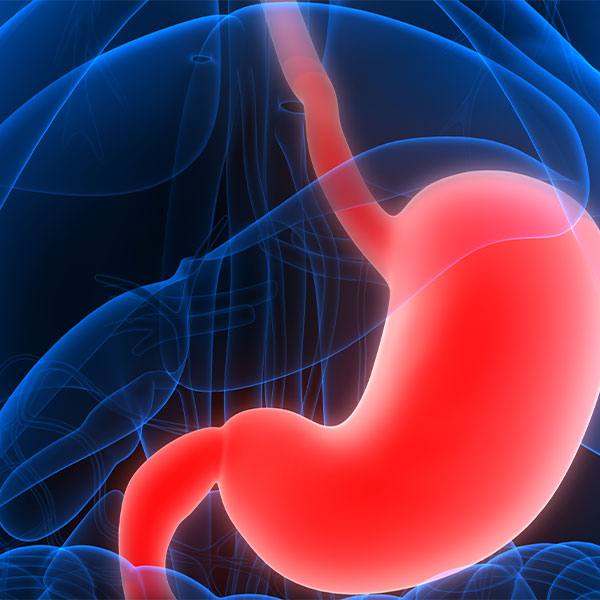-
Cancer
Luring early prostate cancer
Survivors of prostate cancer often live in fear of their cancer coming back. Physicians and patients alike know that early detection is crucial for beating prostate cancer a second time, so it's even scarier when a doctor says that the cancer is there but that it can't be found.
Oncologists monitor the prostate-specific antigen (PSA) levels of men who have been treated for prostate cancer, and when the PSA goes up, it's a warning sign that the cancer is back. The problem, though, is that the cancer itself sometimes can't be found.
That's because elevated PSA levels can occur long before a lesion can be detected by traditional imaging techniques, such as bone scans, computerized tomography (CT) scans and magnetic resonance imaging (MRI). Even if the scans do detect something, there is no way to tell whether it's active cancer, scar tissue from previous treatments or even cancer at all — the scans only see the anatomical abnormalities and not what is causing it.
A Mayo Clinic exclusive, shared globally
However, a Mayo Clinic research team has developed a new imaging method that can often find recurrent prostate cancer months, if not years, earlier than other imaging techniques can.
In September 2012, the Food and Drug Administration (FDA) approved Mayo Clinic's use of choline C-11 positron emission tomography (PET) scans. The choline C-11 PET scan is a diagnostic test used for prostate cancer patients who have undergone previous treatment and then develop rising PSA levels but for whom conventional imaging can't locate a recurrent tumor. The choline C-11 is absorbed by cancer cells and highlights them on the scan.
"For the first time ever, we will have a clear blueprint of where the patient stands, at a far earlier course in treatment failure," says Eugene D. Kwon, M.D., a Mayo Clinic urologist in Rochester, Minn. "It has basically ripped the curtain off the Wizard of Oz."
For many months, Mayo Clinic was the only health care institution in the country authorized to use the choline C-11 PET scan. But when Mayo Clinic originally filed a new drug application with the FDA for use of the choline C-11 component, Mayo Clinic decided to waive all exclusivity, explains Val Lowe, M.D., a Mayo Clinic researcher and radiologist in Rochester. That's because Mayo Clinic wanted medical providers everywhere to be able to manufacture the drug and have access to the test to better serve their own patients, and now that is happening.
PET — The best imaging option
 One of Mayo Clinic's PET scan stations.
One of Mayo Clinic's PET scan stations.
Doctors use a cancer's high rate of growth as a means of visualizing tumors. Prostate cancer tumors consume choline, a B-complex vitamin, to use as a building block. So when a minute amount of radioactively labeled choline (choline C-11) is injected into a patient, it is quickly taken up by the tumor, which then emits radiation.
A PET scanner is able to tell where in the body this radiation is being emitted.
"Then it translates that radiation signal into a computer-digitized picture with a brighter intensity being represented as the site where there is more of this radioisotope localized," Dr. Lowe says. "It's a way of looking at the body three-dimensionally so you can see through the body and around the body."
Dr. Lowe has been interested in positron emission imaging since his early days in college. After medical school, the Canadian-born physician pursued a residency in nuclear medicine and a PET imaging fellowship at Duke University.
"I enjoy the technology and physical science parts of nuclear medicine," Dr. Lowe says. And it gives him the opportunity to use "really cool technology" that combines medicine and computer science with his undergraduate training in chemistry and physics.
Dr. Lowe ran the PET facility at Saint Louis University for five years. During that time in the late 1990s, he says, only about 25 places in the country — all of them academic medical centers — were doing PET scans.
In 1999, Mayo Clinic recruited Dr. Lowe to put together a clinical PET scanning program at its Rochester campus, a program that he says is now one of the two or three busiest practices in the nation, and the fastest growing segment of Mayo Clinic's Department of Radiology.
A year later, Dr. Lowe and his colleagues began looking into PET imaging of prostate cancer in animals. The team compared different radioactive nutrients and found that choline C-11 was the superior imaging agent.
In 2005, the team imaged men with known prostate cancer, and again choline C-11 emerged as the lead compound. By the latter part of 2007, choline C-11 was being used under a research protocol in a small number of patients at Mayo Clinic, allowing the physicians to gain experience and ultimately integrate the test into clinical practice.
Safe and fast
Choline C-11 isn't toxic — it's the same as choline, except that a few of its normal carbon atoms have been replaced by radioactive carbon atoms. The body sees it and treats it the same way as it does regular choline.
"You get it in broccoli and eggs, and in many of the foods you eat," Dr. Lowe notes. "We could give a many-thousand-times greater dose of choline than the dose that we would normally inject into somebody for a PET scan, and it still wouldn't approach what the daily recommended vitamin dose is."
PET drugs are different from most other pharmaceuticals. Among other features, for instance, they have a very short shelf life.
The half-life of choline C-11 is only 20 minutes. That means it loses half its radioactivity every 20 minutes; after 40 minutes it's only one-quarter as radioactive and after an hour only one-eighth, with ever-decreasing radioactivity as time ticks on.
Because the radioactivity is the property that allows the PET scanner to see the cancer, choline C-11 must be used shortly after it's made. It cannot be stored and shipped — it must be manufactured right where it is used.
Mayo Clinic uses a high-energy particle accelerator called a cyclotron to produce C-11, which is then incorporated into choline C-11. Technicians prepare the choline C-11 dose based on the exact time it will be used. A nuclear medicine technologist injects it into a patient waiting on the PET scanner bed.
Because of the demand prompted by patient cases, Mayo Clinic is adding a fourth PET scanning suite and second cyclotron, and it has increased production from twice weekly to twice daily, three times a week.
It takes about 45 minutes to make choline C-11 after the C-11 comes out of the cyclotron. The scan itself takes only about 20 minutes. The results are analyzed, and a report is typically ready for the doctor half an hour after the scan is completed.
Improved results
At Mayo Clinic, choline C-11 PET scanning picks up metastatic lesions in about one-third of the men in whom traditional imaging found no lesions. The false-positive rate for the PET scan is low — about 5 percent, Dr. Lowe says. A biopsy is performed on any suspect tissue found by the scan.
For many men with a rising PSA level, it can be difficult to decide whether and when to treat a possible recurrence of prostate cancer. But with the new choline C-11 PET scans, lesions can be seen far earlier and more precisely, Dr. Kwon says. That allows individual treatment to begin earlier and by repeat scanning "you can find out within two days whether a patient is responding to therapy — you know you're moving in the right direction."
Because of the limited availability of the choline C-11 PET test, Mayo Clinic's Department of Radiology is receiving referrals from all over the Western Hemisphere for scanning. Dr. Lowe estimates that about 90,000 men in the United States alone could benefit from the new test.
The future of PET
Mayo Clinic researchers are also investigating other imaging agents for prostate cancer, such as choline F-18. It has a half-life of almost two hours, which means that a single production run could be used to scan more men. Researchers are also investigating the use of choline C-11 and choline F-18 for other malignancies.
"We're building an experience with early detection," Dr. Lowe says. "And if we can find comparable agents that might do it more cheaply, or might do it faster, we would do that. I think at the moment it's going to make some inroads into the clinical evaluation and treatment of these patients that hasn't been possible in the past. It's a good start — just the first chapter in a great book."







